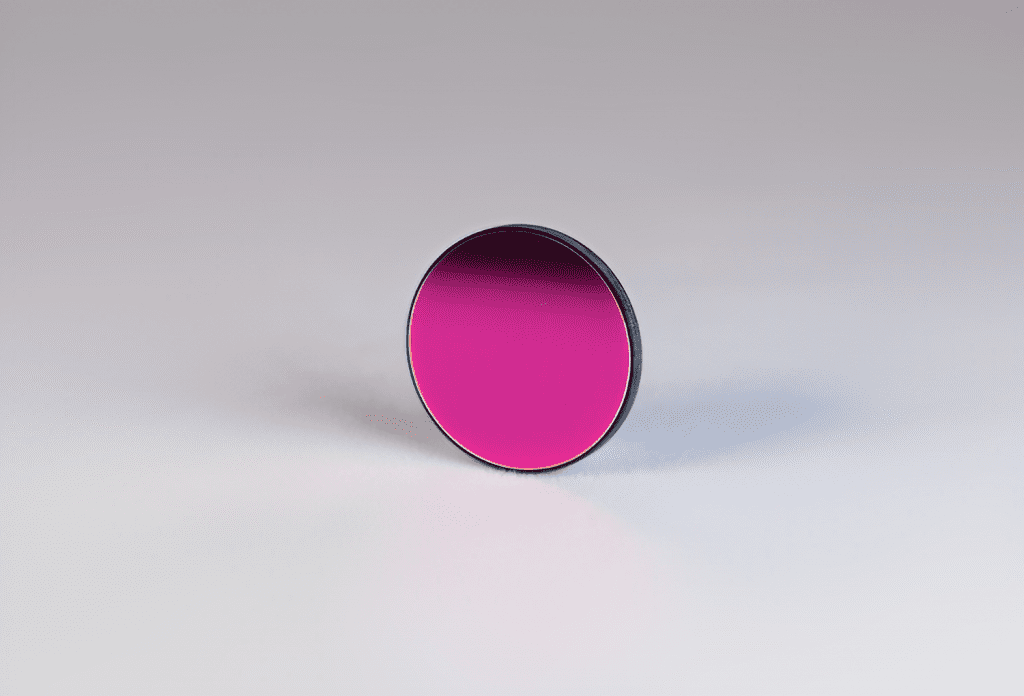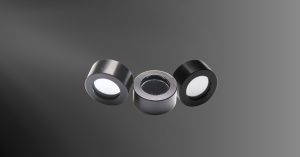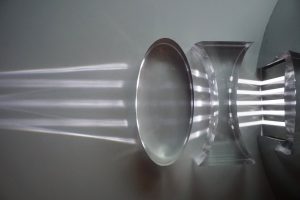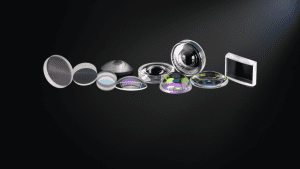Bandpass Filters
A bandpass filter transmits a well-defined range of wavelengths of light while blocking all others. The width of the transmitted band can be as narrow as less than 1 nm or as wide as a few hundred nanometers. The wavelengths range that the filter transmits depends on the choice of substrate and coatings used, which determine the specific wavelengths of light that are isolated and transmitted. This defines whether the filter works best for ultraviolet (UV), visible (VIS), or infrared (IR) applications.
Applications
Bandpass filters are essential wherever it’s desirable to transmit only a specific band of light, rather than the full spectrum. Common applications include clinical chemistry instrumentation, immunoassays, fluorescence, color separation, flame photometry, elemental and laser line separation, spectral radiometry and environmental testing.


Understanding bandpass filters
A band pass filter may be as simple as a combination of a high-pass filter and a low-pass filter. A high-pass filter transmits light with a wavelength greater than a certain cutoff (point a), and a low-pass filter transmits light below another cutoff (point b). Together, they create a filter that allows light with wavelengths greater than A but less than B, establishing a frequency range for the transmitted light.
Specifications
Commonly used specifications include peak transmission, center wavelength, full-width half-maximum, cut-on and cut-off wavelengths, pass band ripple, edge steepness and blocking.
- Peak transmission refers to the maximum transmission of the filter, and is usually given in percent. For instance, if a bandpass filter has 92% peak transmission 92% of the most freely transmitted light is passed through the filter.
- Center wavelength (CWL) refers to the middle of the transmitting region, and is given in nm. For instance, the center wavelengths of a bandpass filter that transmits over the region 520 to 544 might be 532. CWL is not necessarily the point with the peak transmission
- Full-width half-maximum tells us how wide the transmission region is at half maximum transmission value. For the narrow band pass filter described above, the FWHM might be 1.20.
- Cut-on and cut-off wavelengths designate the edges of the filter’s transmitting region. They are also typically given in nm.
- Pass band ripple tells us how flat the transmitting region is. A bandpass filter may have a peaked pass band shape, or may have an approximately flat top.
- Edge steepness is another specification that tells us how steep the transition from blocking to transmission is.
- Blocking range tells us which wavelengths of light are blocked, and optical density tells us just how well the light is blocked. The optical density (OD) is measured by a log scale, which relates the transmitted light to the incident light.
Custom Bandpass Filters at Avantier
If the terminology surrounding bandpass filters seems confusing, don’t worry! Avantier’s optical design team can help you determine the types of filters that work best for your application, and guide you through the entire design and manufacturing process. Our products are designed to withstand harsh environments, such as high humidity and extreme temperatures. Whether you need a hard-coated filter with a dielectric spacer, a standard Fabry-Perot bandpass filter, or thin-film interference filters for LIDAR, we can assist with designing your optical assembly, starting a custom order, and producing the perfect optical components for your filtering operation.
Contact us to schedule an introductory consultation and begin the process.
Note: In signal processing and electronics, a bandpass filter is a device that passes frequencies within a certain frequency range and blocks all other frequencies. For example, it could be used to block high-frequency sound.
WE CAN HELP YOU!
Contact us NOW for sales & expert advice.






